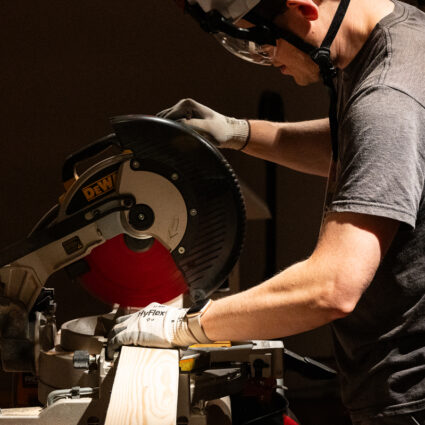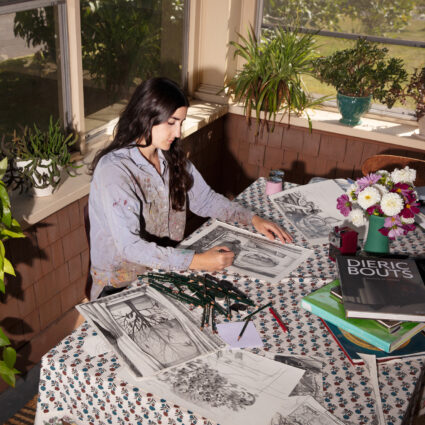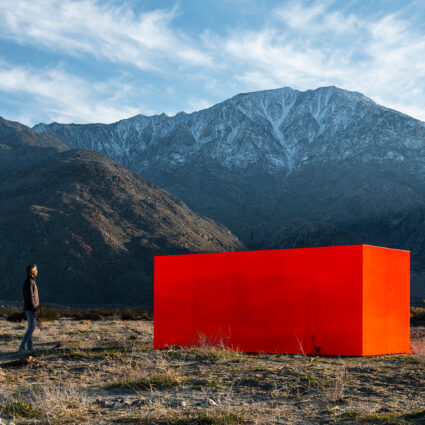Dust Specks on the Sea: Contemporary Sculpture from the French Caribbean & Haiti at 516 Arts, a rare exhibition for the Southwest region, explores Caribbean identity in the face of colonization.
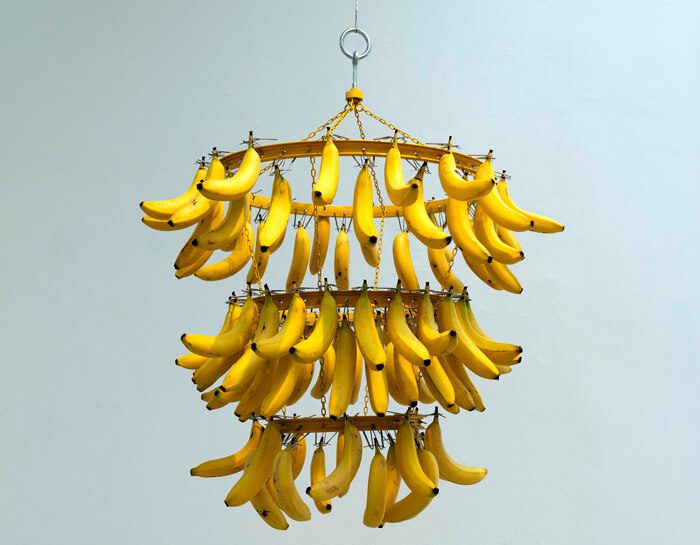
Dust Specks on the Sea: Contemporary Sculpture from the French Caribbean & Haiti
June 19–September 18, 2021
516 Arts, Albuquerque
A distinct smell of bananas permeates the lower level of 516 Arts in Albuquerque, with varying degrees of rotting aroma, depending on how recently the bananas have been replaced.
The bananas, part of Jean-Marc Hunt’s Bananas Deluxe (2013/2018), are courtesy of Chiquita Brands International, global purveyor of bananas and sponsor of this particular artwork in Dust Specks on the Sea: Contemporary Sculpture from the French Caribbean & Haiti. The exhibition gets its name from French President Charles de Gaulle’s degrading description in 1964 of the French Caribbean.
Chiquita Bananas has a history of exploiting land and people in its dominance of the banana market since its founding in 1899, a symbol of imperialism itself. The smell sets a distinct tone for viewing the other works on the lower level—one you can’t quite escape.
The exhibition, which had its initial showing at Hunter East Harlem Gallery in New York, features works by twenty-seven artists from Martinique, Guadeloupe, French Guiana, and Haiti. The rendition at 516 Arts, on display through September 18, 2021, begins with Rêverie/Escape, an enormous floor-to-ceiling wall mural by Ronald Cyrille, who traveled to Albuquerque for the project.
Cyrille’s work is striking in size and content, an image of an island rich with beauty and grief, an erupting volcano haunted by Cyrille’s spirit-like figures who fly throughout the scene. In Cyrille’s mixed media piece Key Escape (2018), nailed feet, limbs being lifted by balloons, and an airplane snatching a bird are reminders of France’s colonial history.

Jean-Ulrick Désert’s Still Life with Flowers (The Spectacle of Tragedy) (2018) addresses contemporary perceptions of Haiti, which won independence from France in 1804. Still Life with Flowers is made of colorful garlands and letters that spell the name and lifespan of Fabienne Cherisma, a fifteen-year-old girl who after surviving the devastating 2010 earthquake was murdered by police a week later.
The colors in the piece feel universally teenage-like; the work is heartbreaking but celebratory, private, and sacred, which, as described in the artist’s statement, is unlike the media’s portrayal of her death at the time. Désert’s piece explores who gets to be mourned with dignity and who with politicization.
The artists in the exhibition speak to numerous aspects of Caribbean identity, perceived and otherwise. Manufacture Coloniale (2004) by Hervé Beuze represents a sugar factory—constructed of black machinery wheels, above which perch red hands hanging from rope but facing upward as if in a reaching gesture. It’s not hard to feel the ache of those hands, the cruel past involved in making a product that’s then neatly exported as something sweet. The wheel and hands are suspended in the air over a sculptural map of Beuze’s native Martinique.
Curator Arden Sherman writes that the works in the exhibition are displayed “in close proximity and in direct conversation with another,” but the wall texts perform some heavy lifting. The program book also feels like a necessary aid, but worthwhile in providing education and context to the exhibition.
Harlem, where the exhibition was originally shown, is a true melange of cultures, with a huge presence of Caribbean people, as is Miami, where the exhibition had its second showing. Dust Specks on the Sea feels like a rare opportunity to see work by artists from parts of the world less commonly represented in the Southwest, yet the omnipresent effects of stolen land and life are not unfamiliar.
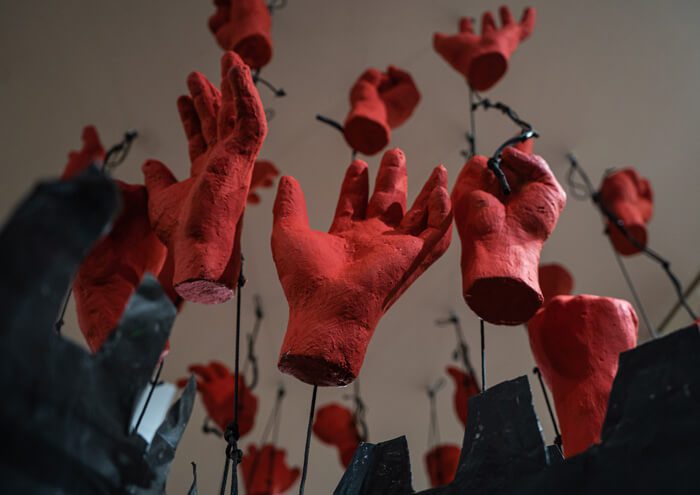
Dust Specks on the Sea: Contemporary Sculpture from the French Caribbean & Haiti continues through September 18, 2021, at 516 Arts, 516 Central Ave SW, Albuquerque.
